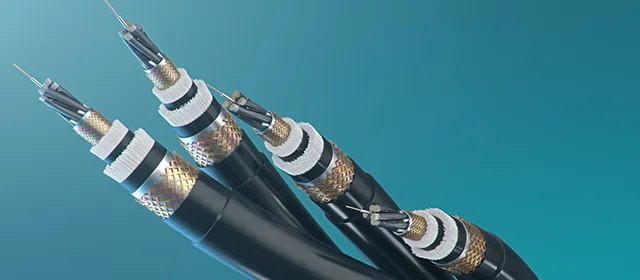Telecommunications infrastructure must evolve to support rising demands for bandwidth, low latency, and reliability. Advanced cables form the backbone that connects radio sites, data centers, aggregation nodes, and end users. Recent developments in cable materials, fiber optics, and hybrid designs enable telecom operators to deliver 5G and fiber services at scale. This article analyzes how advanced cable technologies contribute to 5G and fiber deployment, examines key challenges, and highlights recent industry moves and their implications.
According to Kings Research, the global telecom cable market size was valued at USD 73.71 billion in 2022 and is projected to reach USD 128.35 billion by 2030, growing at a CAGR of 7.19% from 2023 to 2030.
The Role of Cable Infrastructure in 5G and Fiber
Telecom networks rely on two principal types of physical medium: optical fiber and copper (or coax) variants. Fiber carries tremendous capacity across long distances with minimal loss, while copper and coaxial cables still play roles in shorter stretches or in hybrid last-mile models. In the context of 5G, fiber connects cell sites (fronthaul, midhaul, backhaul), enabling high-throughput and low-latency links required by 5G’s bandwidth and signal processing demands. Fiber also supports dense deployment of small cells in urban areas and edge computing locations.
The fiber revolution also underpins fixed broadband expansion. National broadband initiatives continue to invest in fiber infrastructure to close connectivity gaps. The U.S. National Telecommunications and Information Administration reports that about 15 percent of American households lacked access to high-speed internet service in 2023. This drives investment into fiber and complementary cable infrastructure (Source: ntia.gov).
Cables in these contexts must meet rigorous standards of performance, durability, and ease of deployment. Advances such as bend-insensitive fiber, higher fiber counts, hybrid fiber–copper cables, and optical cables with integrated power lines or sensor layers enable more compact and multifunctional installations.
Key Innovations in Fiber and Hybrid Cable Technology
- Bend-Insensitive and Microstructured Fibers: Modern fiber cables include bend-insensitive fiber designs that reduce signal loss when fibers route around tight corners or within compact enclosures. This characteristic permits more flexible cable routing in indoor or urban settings without compromising performance. Microstructured or photonic crystal fiber variants further refine control over mode propagation, though their usage is still emerging.
- Higher Fiber Counts and Ribbon Cables: Service providers increasingly deploy cables containing higher fiber counts, such as 144, 288, or even 432 fibers in a single sheath. Ribbon fiber cables permit mass fusion splicing, speeding up installations in trunk routes. These high-density cables reduce the number of conduits or ducts required and simplify future expansion.
- Hybrid and Composite Cables: Hybrid cables combine fiber with copper, power conductors, or coax in a single sheath. This design supports power over fiber or direct supply to remote radio units and small cells. Composite cables that integrate sensing (temperature, strain) help operators monitor cable health, detect faults, and plan maintenance proactively.
- Low-Loss Connectors and Splices: Connector and splice improvements reduce insertion loss and reflectance, preserving signal integrity across interconnection points. Precision polishing, low-reflection ferrules, and enhanced splicing techniques help maximize usable optical budgets, which is critical for long optical runs in fiber backhaul.
- Specialized Outer Sheaths and Armoring: Advanced telecom cables use enhanced sheathing materials resistant to moisture, UV, abrasion, rodent damage, and low temperatures. Armored versions include corrugated steel or other protective layers for direct burial or harsh outdoor installations. These designs increase reliability and lifespan in challenging environments.
Deployment Challenges in 5G and Fiber Cable Networks
Cable deployment requires significant civil works, permitting, and coordination with utilities. In urban contexts, right-of-way constraints and space for conduit or fiber ducts impose design complexities. Cost per meter, splicing labor, and variant inventories present logistics demands for operators.
Cable quality, consistency, and supplier reliability are essential. Poor material quality or manufacturing defects may lead to high attenuation or failures, which degrade network performance. Cable life expectancy and maintenance remain long horizons, so operators must ensure standards for durability. In areas subject to seismic activity, vibration, or thermal extremes, design margin must accommodate environmental stresses.
Another challenge lies in cable route planning. Operators must balance shortest paths, ease of access, serviceability, and future upgrade potential. Cable paths must anticipate future densification of fiber routes or 5G node growth to avoid costly rerouting.
How Are Industry Leaders Driving Cable Innovation and 5G Expansion?
Furukawa Electric, a major optical fiber cable supplier, announced that it will unify its global optical fiber cable operations under a new brand, Lightera, starting April 2025. This consolidation intends to align development efforts across geographies and respond to accelerating demand for fiber in data center, telecom, and 5G markets.
AT&T entered a $1 billion multiyear partnership with Corning to procure fiber, cable, and connectivity components to support its high-speed internet and 5G growth plans. The agreement covers the supply of cable and optical components to match network expansion targets.
AT&T already serves more than 8.8 million fiber customers and passes over 28 million home and business locations. The expansion drives demand for high-performance cables in both urban and rural settings (Source: about.att.com).
In U.S. broadband buildouts, fiber providers continue committing capital to expanding reach. For instance, Omni Fiber announced plans to invest over $465 million to expand fiber networks in Ohio, Michigan, and Pennsylvania to cover roughly 400,000 new locations. The extension needs advanced fiber cable deployment at scale. These initiatives illustrate how leading operators tie cable procurement strategies directly to 5G and fiber rollout targets, reinforcing the strategic importance of cable innovation.
How Advanced Cables Enable 5G Capabilities
High-capacity fiber connections connect 5G baseband units, remote radio units, and small cells. Reduced latency and high throughput in fiber links support features such as massive MIMO, beamforming, network slicing, and real-time edge services. Cable reliability becomes critical in maintaining consistency and minimizing downtime in dense 5G coverage zones.
Small cell deployments demand compact cable solutions that can be hidden or fit into street furniture. Bend-insensitive fiber and composite microcables help match compact routing constraints. Hybrid cables that integrate power reduce the need for a separate power conduit, improving installation efficiency. Future 5G applications, such as augmented reality, real-time video surveillance, and industrial IoT, rely on resilient and high-bandwidth transport links. Cable quality directly impacts user experience and the viability of advanced services.
Supporting Fiber Broadband with High-Density and Hybrid Cable Designs
Residential and enterprise fiber broadband deployments benefit from improved cable designs in several ways. High fiber count trunks allow aggregated capacity serving multiple neighborhoods. Mass-splice ribbons and modular joints lower field labor costs. Laterals (drop cables) that use microduct systems allow easy customer connection and minimal disruption.
Cable backbone resilience and redundancy reduce outages and maintenance overhead. Monitoring fibers with integrated sensors allows operators to detect stress, temperature changes, or cuts before services degrade. This proactive detection improves network reliability for end customers.
Audio, video, and cloud services over fiber benefit from low jitter and latency. These performance gains arise from preserving signal integrity across cable runs. High-quality cables reduce the margin overhead required, enabling longer link runs and fewer repeaters.
Real-World Applications of Advanced Telecom Cables
An operator planning 5G densification in an urban core must map routes between existing fiber trunks, street light poles, and building rooftops. Advanced bend-insensitive microcables facilitate vertical risers and tight bends without signal degradation. Hybrid cables to power remote radios reduce cable burden. Route diversity ensures resilience in case of fiber cuts.
In suburban or rural fiber expansion, large trunk cables with high fiber counts reduce the need for multiple conduits. Corridor planning that shares conduits across utilities maximizes resource use. Armored cables in direct burial paths ensure protection. Monitoring features embedded in cables detect damage from digging or environmental degradation early. Data center interconnect and metro fiber ring expansions rely on high fiber count trunk cables. Mass fusion splicing into ribbon fibers accelerates commissioning. Long-haul runs depend on low attenuation fibers and premium connectors to expand link length without regeneration.
Future Outlook and Trends
Cable designs will evolve to incorporate more intelligence. Fiber cables may include more embedded sensors, distributed amplification, and active components to reduce reliance on external equipment. Smart cables may monitor stress, moisture, temperature, and even detect physical tampering.
Materials research promises lower-loss fiber, better bend performance, and increased lifespan. Advances in polymer and glass compositions may push fiber performance further for 5G and high-throughput broadband. Hybrid integration may extend to optical cables that also carry wireless frontends (fiber antenna integration) or power modules. Converged cable designs may reduce infrastructure complexity.
Standardization remains important. Operators and standards bodies must align on connector formats, fiber counts, and testing protocols to ensure interoperability and ease of deployment. Cable manufacturing scale, yield improvements, and supply chain stability will continue as key differentiators. Cost reductions through volume and innovation make advanced cables viable for tier-2 and rural markets.
Policy support and funding for broadband infrastructure will drive continued investment in fiber deployment programs. In the U.S., federal funding under broadband initiatives continues to spur operator expansions to underserved areas. The digital divide metric of 15 percent of households lacking high-speed access in 2023 frames the ongoing need.
Conclusion
Telecom cables represent more than buried wires or fiber bundles. They form the infrastructure through which 5G and fiber networks deliver performance, reliability, and scale. Innovations in fiber design, hybrid integration, high fiber counts, and advanced protective sheathing are enabling operators to handle densification, route constraints, and cost pressures. Strategic supplier partnerships, such as those between AT&T and Corning, and brand consolidations like Furukawa’s Lightera initiative, underscore industry recognition that cable advancement is fundamental to network expansion. Deployment strategies that optimize route diversity, cable types, and predictive monitoring deliver better uptime and performance across 5G and fiber systems. The continued maturation of cable technologies will play a pivotal role in sustaining the momentum of digital connectivity worldwide.




